Hawaii Base Guides
About Hawaii
If you’ve received orders to Hawaii, congratulations! Pack away your winter clothes and stock up on beachwear because paradise awaits. The island can be intimidating, but the good news is that it’s HAWAII and incredible places to live are plentiful. 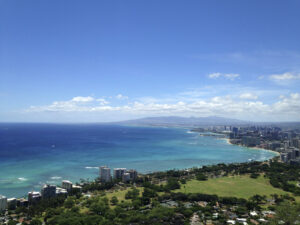
After the initial celebration that comes with orders to Hawaii comes the daunting task of researching where to live. This tropical archipelago can seem like a foreign land, and with good reason! Multiple languages are spoken on the islands, many distinct and culturally rich ethnic groups are represented, and “mainlanders” are regarded as tourists or visitors. The overwhelming advice we’ve received from military spouses who have been stationed here is to embrace the culture and customs of the island! The sooner you shed your “mainland eyes” and reframe your perspective, the sooner your love affair with this duty station can begin.
Yes, homes are more expensive here, but it’s a tropical paradise.
Yes, it’s practically like moving to a foreign country, but soak in that magnificently rich culture and history.
Yes, houses and construction practices are very different and few homes have central A/C, but you will eventually acclimate to the climate and learn to love your breezy lanai.
Yes, open windows and doors invite guests of the critter variety, but the geckos eat mosquitos (circle of life, Ohana, all that...).
Embrace the aloha spirit and go ahead and get on island time. Keep an open mind and a positive spirit and take advantage of the once-in-a-lifetime travel opportunities! You’ll leave the island better for it.
 Housing
Housing
The first task to tackle is where to live. At almost 600 square miles, the island of Oahu is huge, and getting around isn’t terribly convenient. Figure out what your priorities are (beaches, places to hike, quiet refuge, etc.), and then start narrowing down locations from there. On-base housing is in extremely high demand, and it’s likely that you’ll be on a waiting list for a few weeks to several months! There is a healthy supply of short-term and vacation rentals available for this reason. Focus on where to live more so than the style or quality of the home. Location definitely trumps the size of the home, its age, and whether or not it has air conditioning (it probably won’t). Home values appreciate consistently here, so it’s not a terrible idea to go ahead and invest in a property. If you’ll be here for a few years, plan to rent it out when you PCS again. If you think you may return in retirement, it’s a great idea to look into purchasing a home. Be prepared for sticker shock, though. Spending $600,000 for a tiny fixer upper or upwards of $1M+ on a new home is not unheard of.
Traffic
The traffic on Oahu is something you should really spend some time on, so consider this your crash course.
Lesson 1: Directions
Hawaiians give directions based on landmarks, and the navigational descriptors they use date back to the way their ancestors oriented themselves on the island. Exchange east and west for windward and leeward. The island is home to the glorious Ko’olau Mountain Range that runs north/south, bisecting the island. Anything to the east of the mountains (Kaneohe, Kailua, MCBH) is considered to be on the windward side—the mountains block the incoming trade winds. Furthermore, you’ll also hear mauka (MOW-kah), meaning “mountain side” and makai (ma-KAI), meaning “oceanside.” These terms are used frequently to distinguish which side of the road or direction is in reference. Cross over, or through, the mountains and you’re on the leeward side, which is pretty much everything from Honolulu (or “town”) and beyond. The terminus for each of the highways is also interchanged for cardinal points (N, S, E, W). For example, “From town, go Ewa-bound on the freeway” means that from Honolulu you’ll get on H1 heading west.
Lesson 2: Highways
There are only three main highways on the island: H1, H2, and H3. The main north/south artery is H2, and it connects the North Shore to Pearl City, where it then converges with H1. To get from the leeward side of the island (western coast) to “town” (Honolulu), you’ll take H1. Near Tripler Army Medical Center, H3 branches off of H1 and continues out to the windward side (eastern coast) to Kaneohe. Generally speaking, going east to west is considered reverse commuting, and if you can limit your time on the H1 and H2 (Honolulu traffic) you’ll be spending more time on the beach and less time in the car.
Lesson 3: Etiquette
Because there are very few ways to get around, an accident or jam on one of the highways can cause major delays. Also, remember you’re on island time. Most drivers truly embody this, driving at or below the speed limits and allowing everyone to merge. Aloha spirit. Just take a deep breath and go with it! If you’re accustomed to city traffic, Oahu traffic shouldn’t be that much a departure from your norm, but if you can’t wrap your head around driving for 30 minutes to travel five miles, you’ll definitely want to make commute times a priority when looking for a home. Learn to give and accept the “shaka” hand sign in traffic! It’s basically a “my bad” or “thank you” for merging and is exchanged frequently. Make a fist, extend your thumb and pinky, and give a little wiggle—instant aloha spirit!
Schools
One of the top influencers for PCSing families when deciding where to live is school choice. We know how daunting this decision can be and want to help! Hawaii is the only state in the U.S. with a unified school system, meaning state taxes are distributed to all of the schools without regard to districts. Variance in class size, language barriers, and socioeconomic disparities are going to all be factors when looking at test scores and third-party rating systems. Many spouses report that the rankings don’t always reflect a school’s quality of education. While school ratings are a fantastic resource for test scores, class sizes, and a plethora of other data, they only tell part of the story. Interview the school, identify your child’s needs, weigh pros and cons of commute/specials/class sizes, and look for military-friendly staff and programs at the school. Private schools are popular and costly, and if you would prefer to opt private, you’ll find more variety and selection closer to Honolulu.
Pets
Fido has to “do some time” before he can enjoy the beach. To keep the island rabies-free, there is a mandatory quarantine for pets coming to Hawaii. Most pets should qualify for the five-days-or-less program, but some animals could spend up to 120 days in quarantine.

KEY CONTACTS
Family & Community Housing Navy Aloha Center Housing Service Center
4825 Bougainville Dr.
Bldg. 2652
Honolulu, HI 96818-3174
PH: (808) 474-1804
Military and Family Support Center
4827 Bougainville Dr.
Honolulu, HI 96818
PH: (808) 474-1999
Most installation services will be available Monday through Friday, 9:00am to 4:00pm. As always, call first to confirm hours and availability of services.
Helpful hint: Contact these offices early in the week during the morning time
About Joint Base Pearl Harbor-Hickam
The historic naval base Pearl Harbor dates back to the turn of the 20th century and played a significant role during WWII and after. Hickam Field was activated in 1938 and occupied the adjacent land between Pearl Harbor and Honolulu. In 2010, the Base Closure and Realignment Commission decided to combine the two Pacific powerhouses, and Joint Base Pearl Harbor-Hickam (JBPHH) was formed. Major Air Force units that call JBPHH home are the 15th Wing, the 647th Air Base Group, and the Joint MIA/POW Accounting Command. It’s host to several major Navy commands, including the U.S. Pacific Fleet.
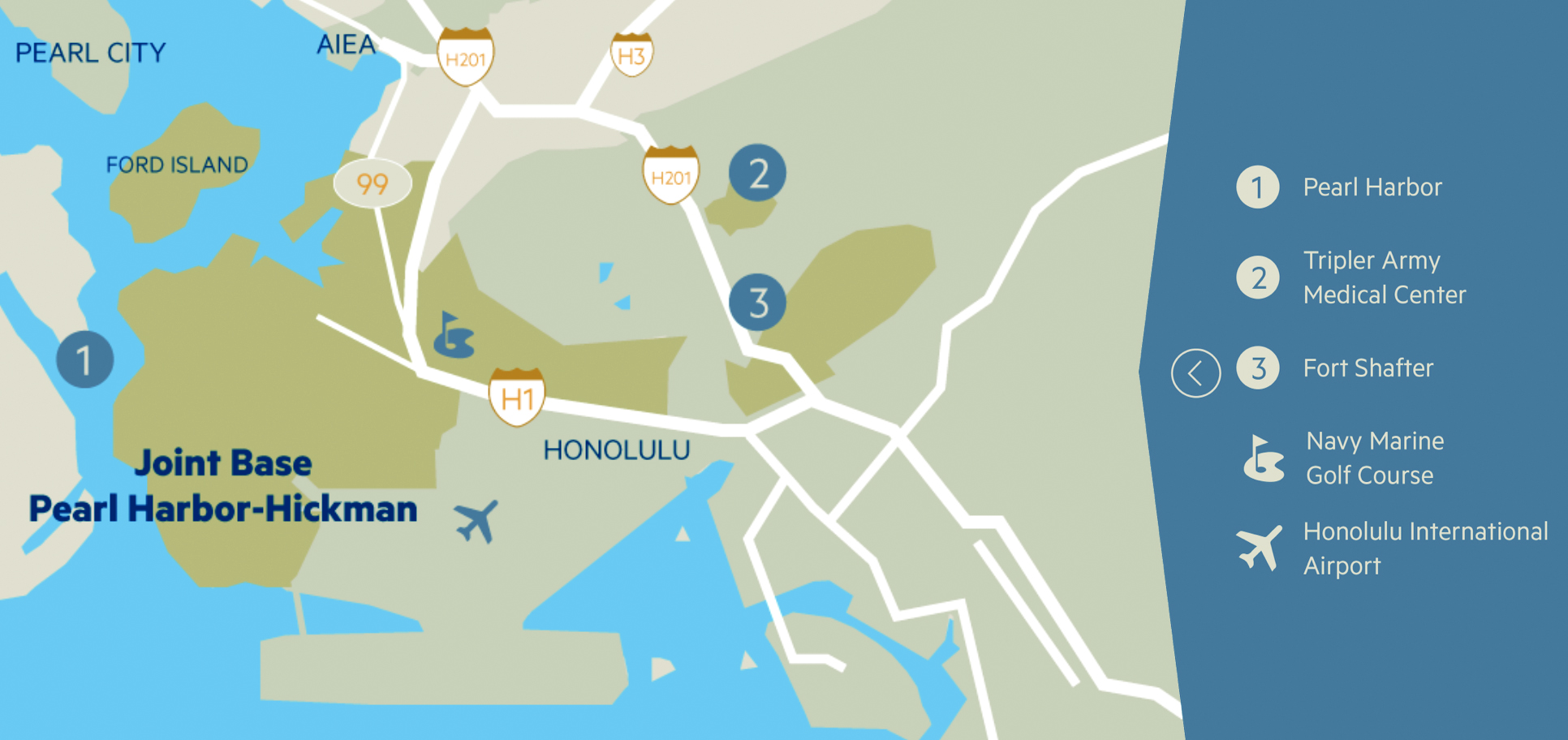
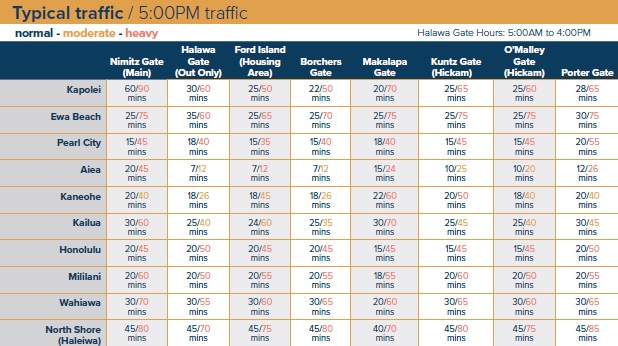
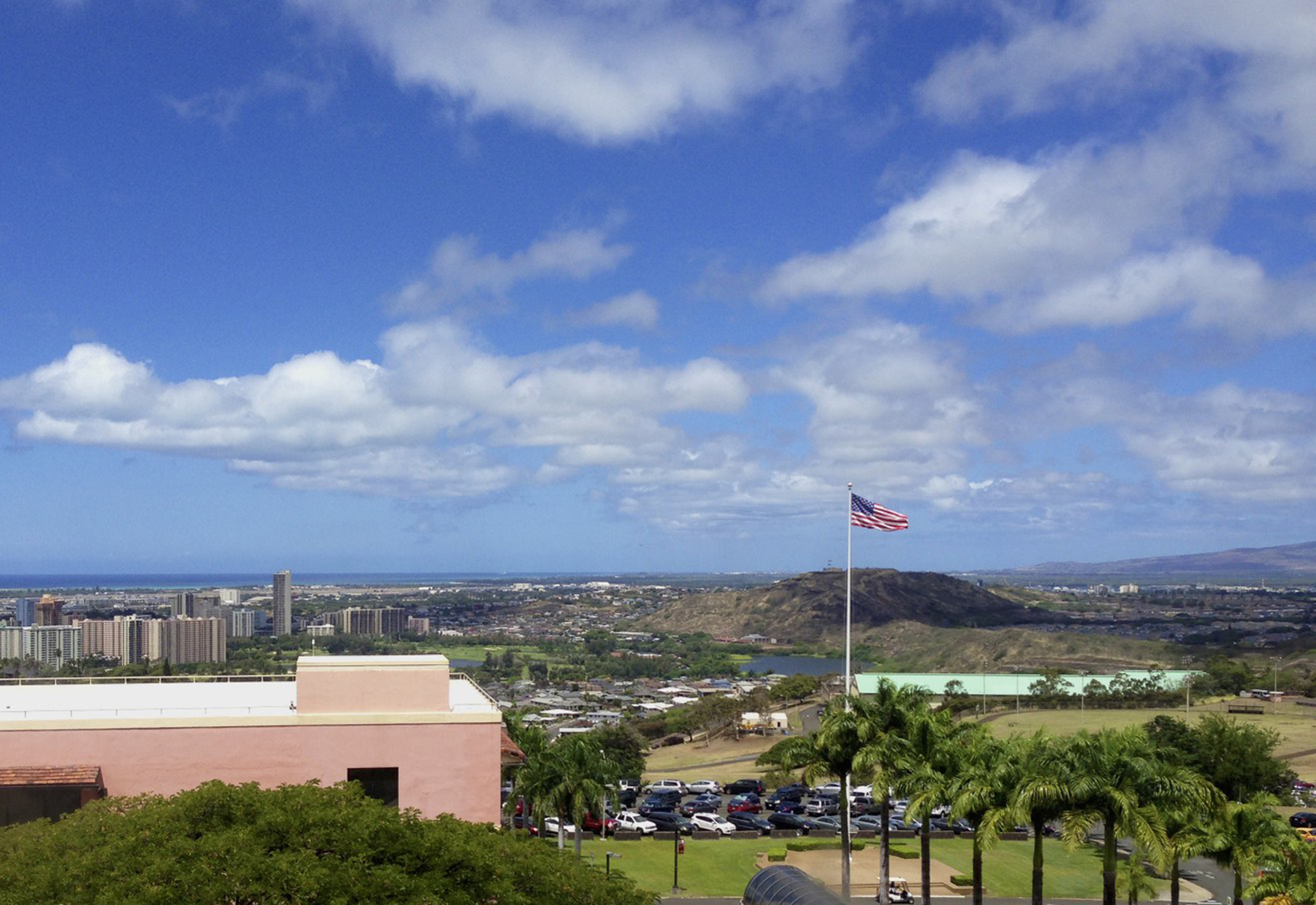
KEY CONTACTS
Housing Office/Government Housing Island Palm Communities Hawaii
215 Duck Rd.
Schofield Barracks, HI 96857
PH: (877) 487-4323
Army Community Service (ACS)
310 Brannon Rd.
Bldg. 690
Schofield Barracks, HI 96857
PH: (808) 787-4227
Most installation services will be available Monday through Friday, 9:00am to 4:00pm. As always, call first to confirm hours and availability of services.
Helpful hint: Contact these offices early in the week during the morning time
About Tripler Army Medical Center
Tripler Army Medical Center (TAMC) is one of the most modern medical facilities in the world. It’s home to the Pacific Regional Medical Command and serves at least 400,000 people in the Pacific Basin. Though its history dates back to 1907 when it was housed within Fort Shafter, the present-day complex was dedicated in 1948. It can be spotted from any point in the Honolulu district due to its perch on the Moanalua Ridge and its distinctive coral pink color. One of several rumors about the color choice is that the paint and design elements were modeled after the Royal Hawaiian Hotel in Waikiki. Another theory is that a soldier ordered 30 million gallons of the wrong color! Whatever the reason, we love the “Pink Lady”—she’s MILLIE approved!
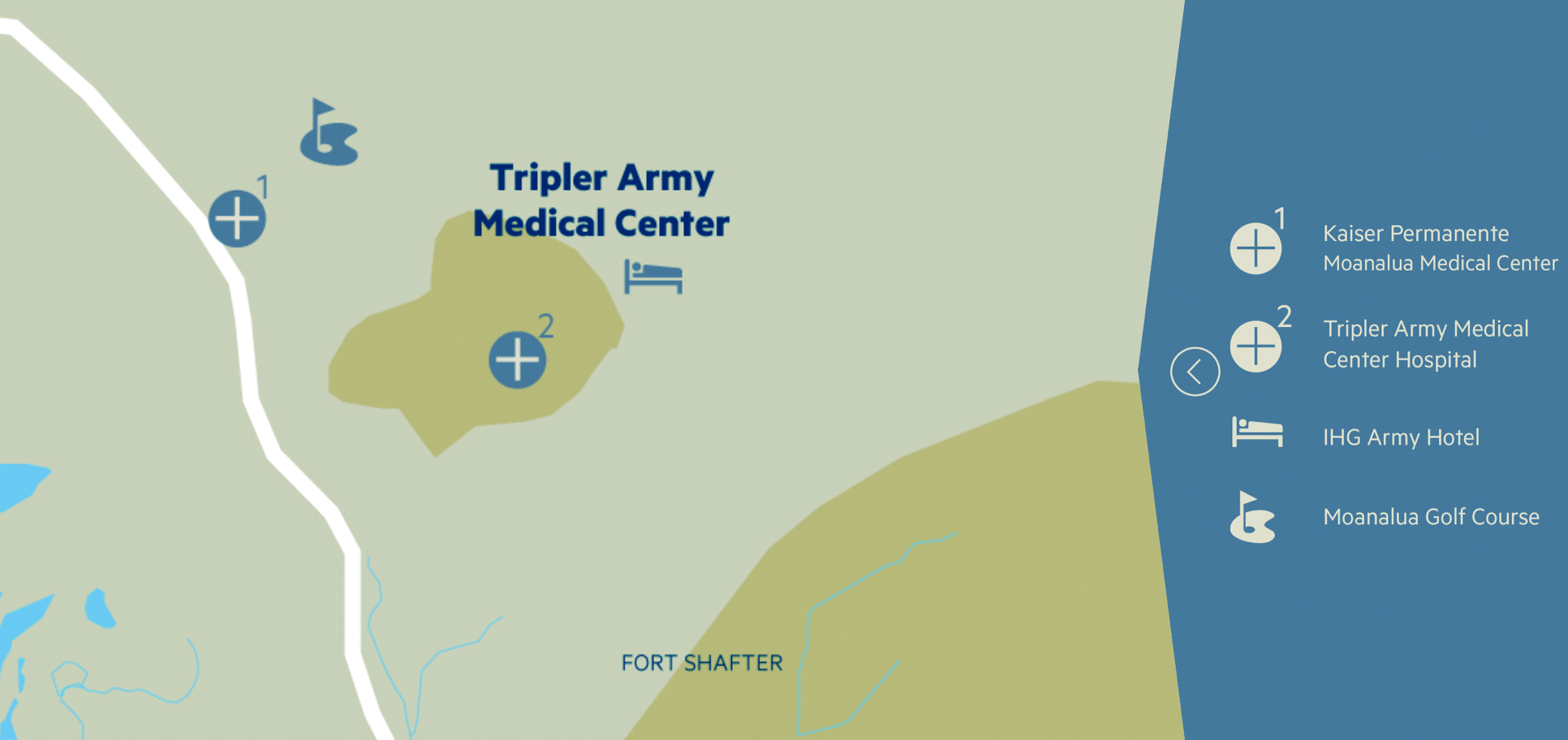
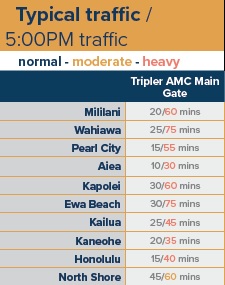
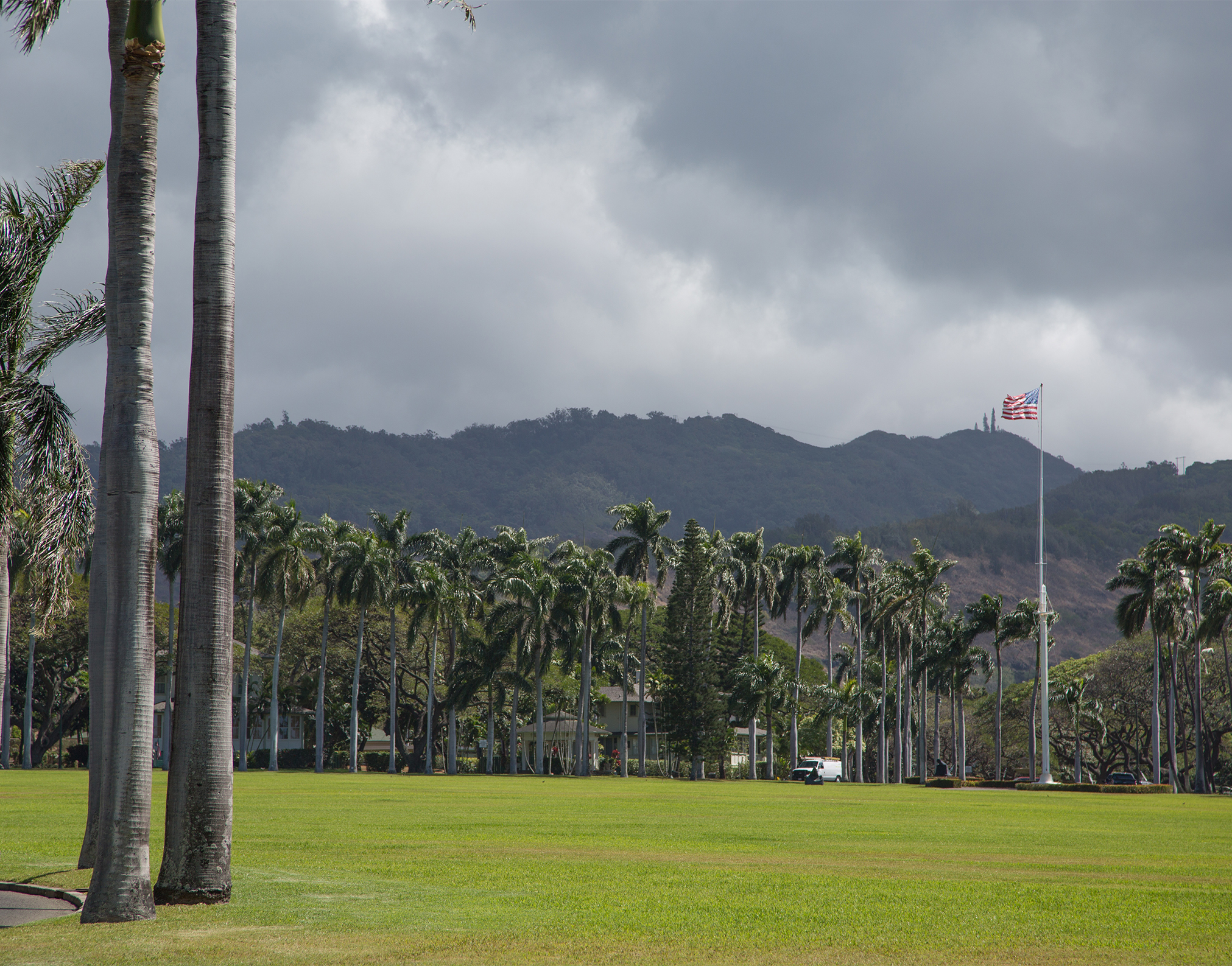
KEY CONTACTS
Fort Shafter Housing Office
601 7th St
Honolulu, HI 96819
PH: (888) 458-8933
Army Community Service (ACS)
310 Brannon Rd.
Bldg. 690
Schofield Barracks, HI 96857
PH: (808) 787-4227
Most installation services will be available Monday through Friday, 9:00am to 4:00pm. As always, call first to confirm hours and availability of services.
Helpful hint: Contact these offices early in the week during the morning time
About Fort Shafter
Fort Shafter is a charming base in the center of the island of Oahu, Hawaii. The installation’s history dates back to 1907, and it is currently home to the headquarters of the United States Army Pacific Command (USARPAC). At the center of the base, the postcard-worthy Palm Circle is a designated National Historic Landmark. It was originally laid out as an infantry cantonment area, but Fort Shafter has grown up around the palm-lined parade field. Fort Shafter is very close to Honolulu, Joint Base Pearl Harbor-Hickam, and Tripler Army Medical Center.
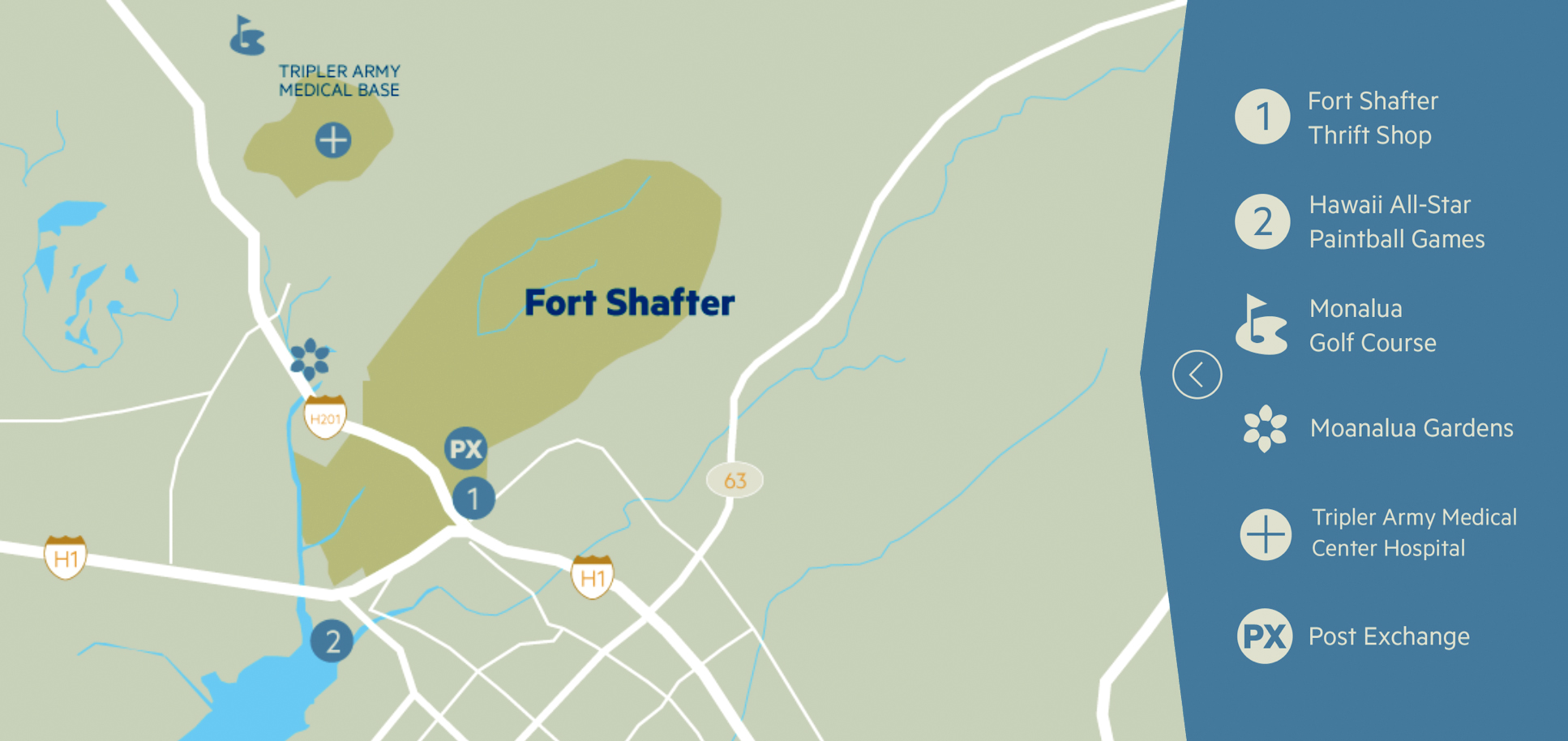
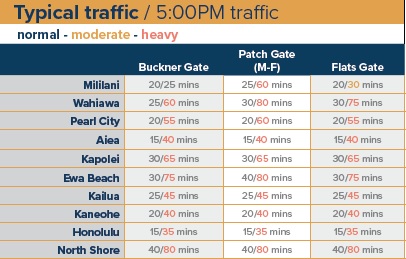
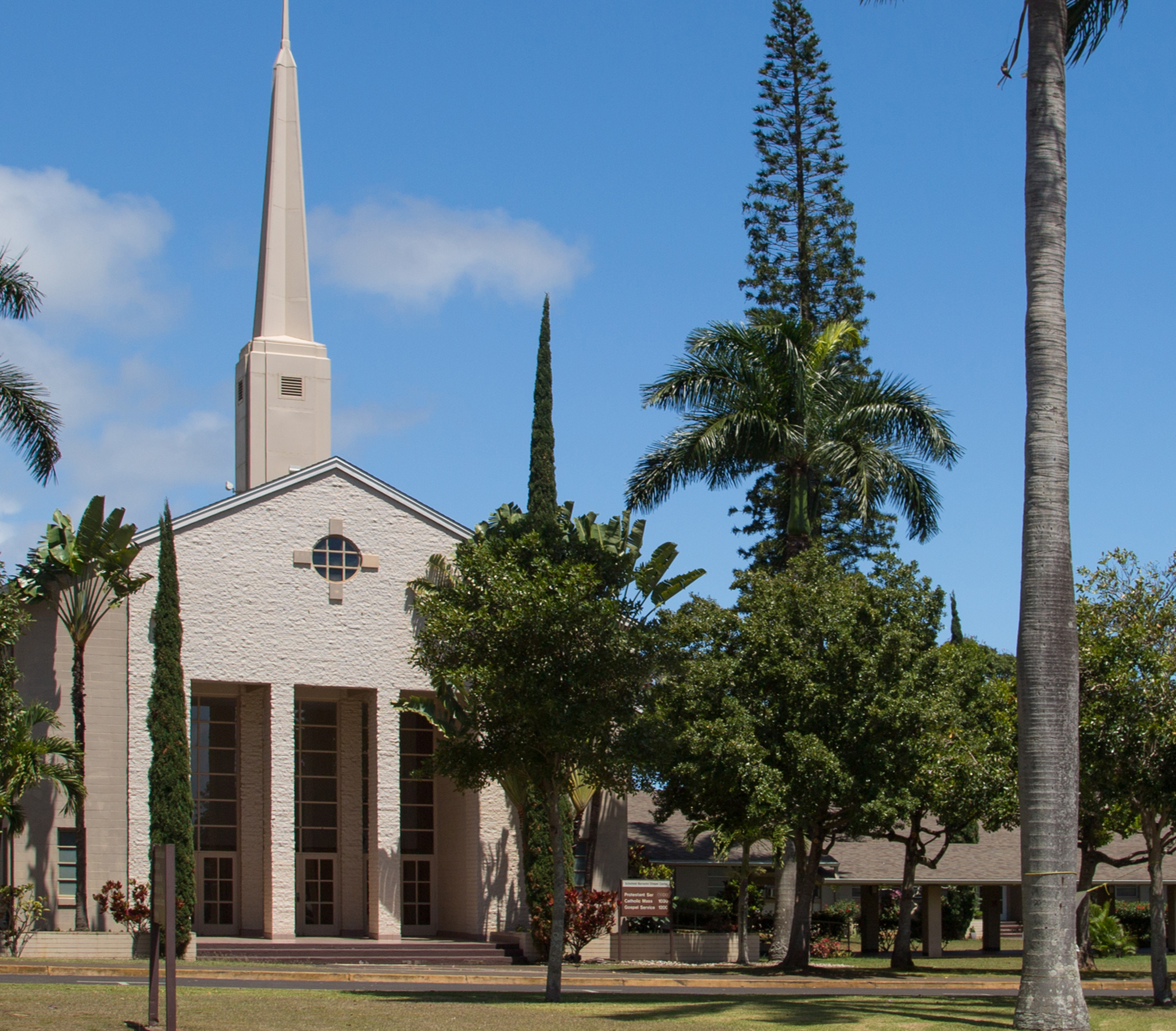
KEY CONTACTS
Housing Office/Government Housing Island Palm Communities Hawaii
215 Duck Rd.
Schofield Barracks, HI 96857
PH: (877) 487-4323
Army Community Service (ACS)
310 Brannon Rd.
Bldg. 690
Schofield Barracks, HI 96857
PH: (808) 787-4227
Most installation services will be available Monday through Friday, 9:00am to 4:00pm. As always, call first to confirm hours and availability of services.
Helpful hint: Contact these offices early in the week during the morning time
About Schofield Barracks/Wheeler Army Airfield
Nestled at the foot of the Waianae Mountain Range, Schofield Barracks is located near the towns of Wahiawa and Mililani and about 30 minutes from Honolulu. Home to the 25th Infantry Division, Schofield Barracks was established in 1908 to provide a base for the Army’s mobile defense of Pearl Harbor and the entire island. Wheeler Army Airfield is adjacent to Schofield Barracks and is home to the headquarters of the U.S. Army Garrison-Hawaii. Under the USAG-HI umbrella, 22 Army installations and sub-installations operate throughout Hawaii.
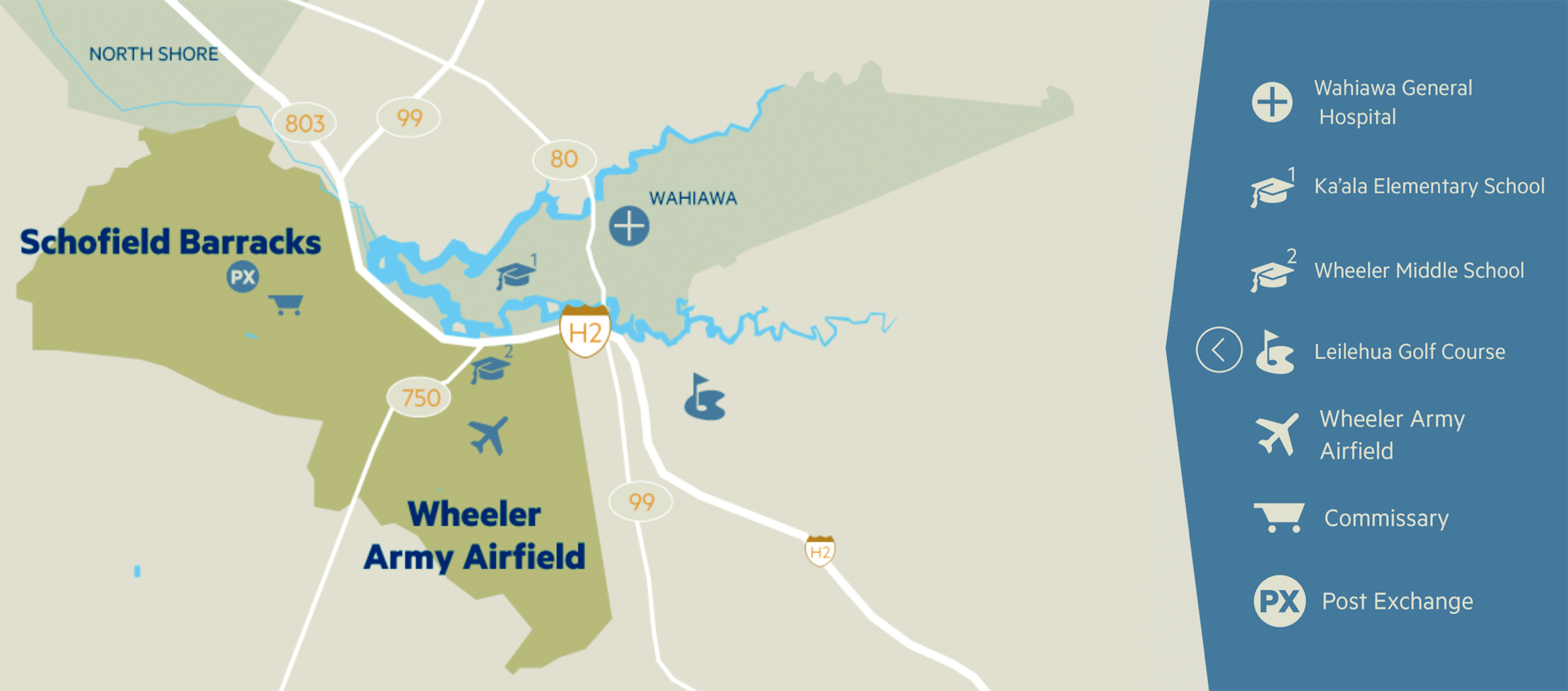
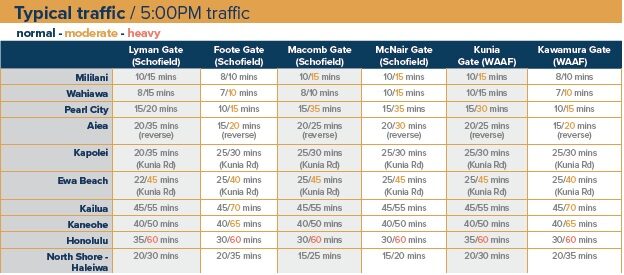
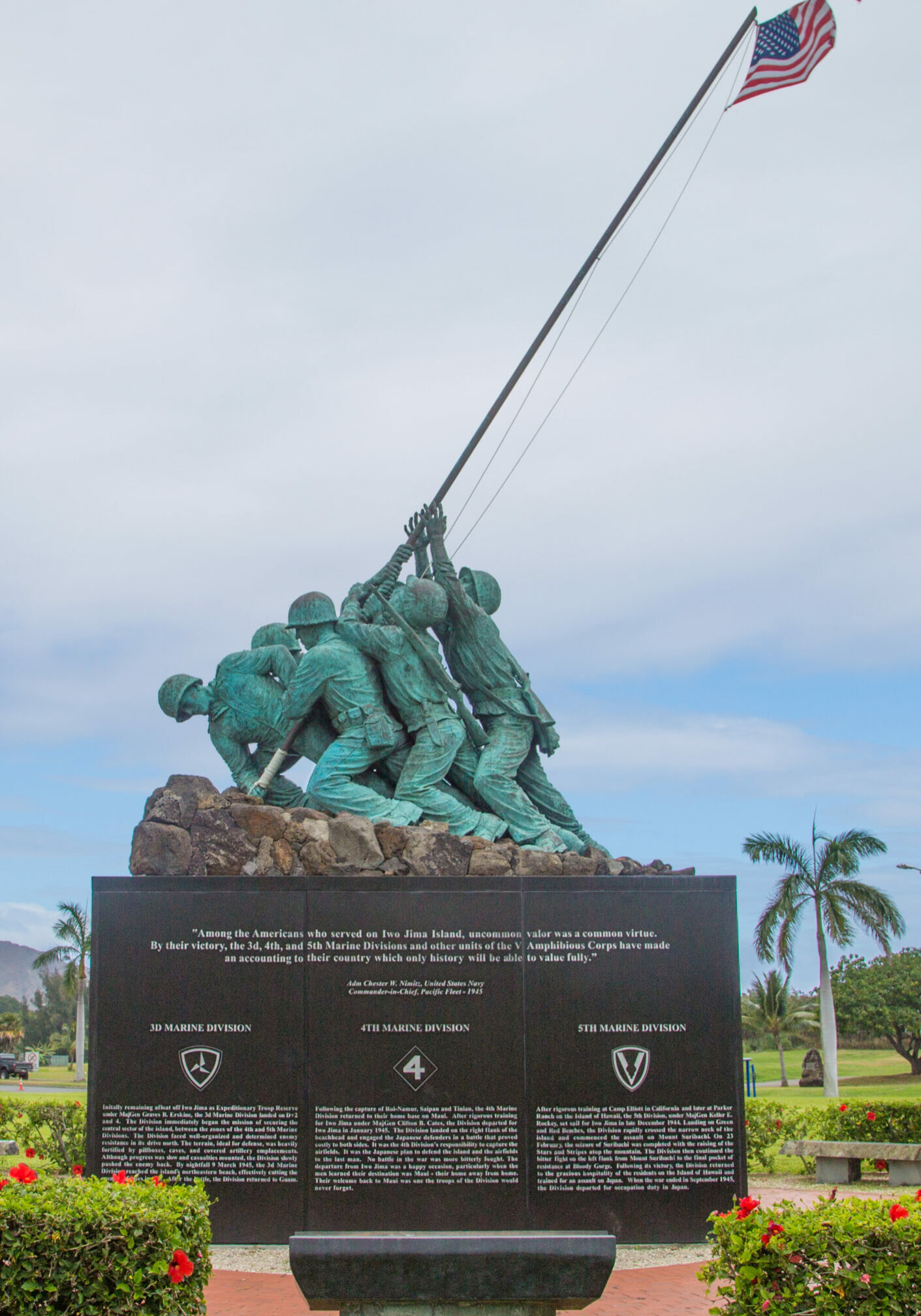
KEY CONTACTS
MCB Hawaii Housing Office
1571 Lawrence Rd., first floor
Kailua, HI 96734
PH: (808) 257-2676
Marine Corps Community Services Hawaii
E Street
Building 219
Kailua, HI 96734
PH: (808) 254-7679
Most installation services will be available Monday through Friday, 9:00am to 4:00pm. As always, call first to confirm hours and availability of services.
Helpful hint: Contact these offices early in the week during the morning time
About Marine Corps Base Hawaii
Marine Corps Base Hawaii (MCBH) is positioned on prime real estate on Oahu’s Windward Coast. Taking up the entire Mokapu Peninsula, it rests between the two coastal towns of Kailua and Kaneohe, with the Ko’olau Mountain Range just west of the base. This land has been through multiple military evolutions since 1918, including its inception as an Army artillery base, a naval air station, and now the Marine Corps Base Hawaii. MCBH is home to the 3rd Marine Regiment, Marine Aircraft Group 24, Combat Logistics Battalion 3 (CLB-3), and the Navy’s Patrol and Reconnaissance Wing 2.
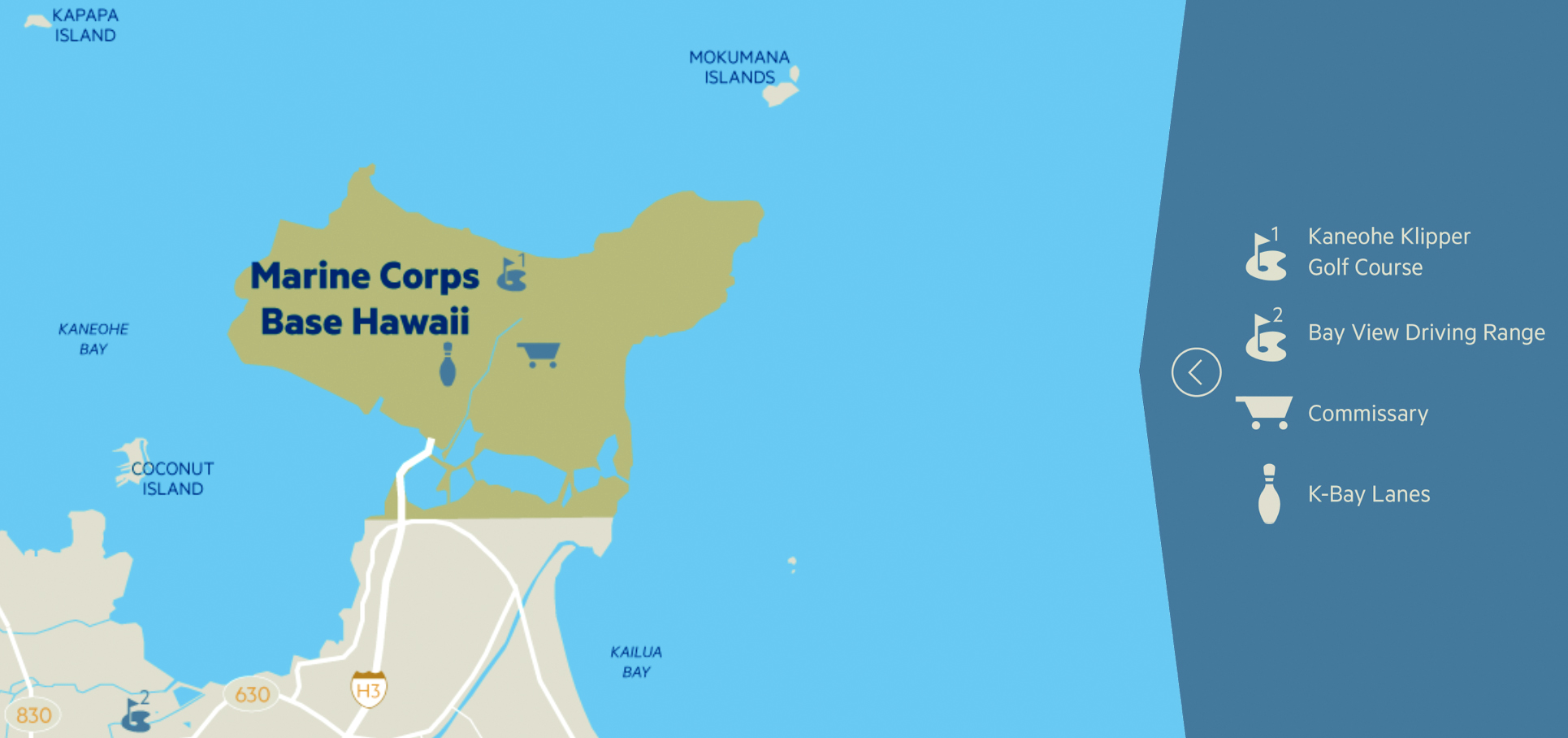
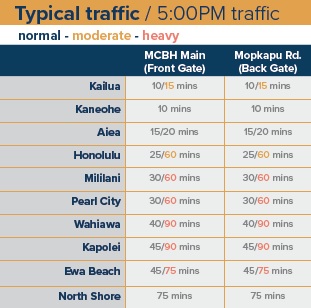
Looking at relocating?
Enter your information below and we will reach out to help the process.
7 Reasons You Should Consider Buying a Home
1. TAX ADVANTAGES
To encourage homeownership, the IRS has provided many tax breaks for owning a home. Credits may be available for specific home improvements, such as using clean energy or for qualified first-time home buyers. The way most homeowners see those advantages is through income tax itemization and deductions like mortgage interest and real estate taxes.
2. STABALIZE MONTHLY HOME COSTS
Owning your own house is one of the safest bets on stabilizing your monthly home costs. There’s no worry of rent getting increased significantly after each year of living in someone else’s home. Additionally, when you answer to yourself, there is no worry of landlord changes or unexpected lease termination.
3. HOUSE HACKING
Generally speaking, house hacking is a smart strategy that involves renting out a portion of your primary residence as a means of generating income to offset your own living expenses. Think turning your finished basement or mother-in-law quarters into an AirBnB! Or consider purchasing a multi-unit duplex or triplex: live on one side and rent out the other! If your home making money while you’re living in it doesn’t sound like your thing, there’s always renting it out after you PCS as an income generating investment property.
4. Increased Privacy
Generally speaking, house hacking is a smart strategy that involves renting out a portion of your primary residence as a means of generating income to offset your own living expenses. Think turning your finished basement or mother-in-law quarters into an AirBnB! Or consider purchasing a multi-unit duplex or triplex: live on one side and rent out the other! If your home making money while you’re living in it doesn’t sound like your thing, there’s always renting it out after you PCS as an income generating investment property.
5. Pets Are Welcome!
For those who choose to rent instead of buying, it can be extremely difficult to find rentals who allow for your
four-legged, furry friends. Landlords often require hefty pet deposits or place heavy restrictions on the number of pets and breeds they allow—if they will even allow pets. When considering quality of life, including beloved pets and the indoor and outdoor space available to them matters. Having the flexibility to include ALL members of your family as a homeowner is priceless!
6. Pride of Ownership
One of the greatest benefits of owning your own home is the pride of ownership that comes along with it. Not only are homeowners more inclined to take good care of their investment with routine maintenance and cleaning, but also they are free to make design choices ranging from hanging artwork on the walls, to paint colors, to customization of closets, electronics, and more. As military families who relocate frequently, having your home reflect who you really are feels important.
7. Safe and Stable Long Term Investment + Forced Savings
Owning a home has historically been one of the safest, lowest risk financial investments that tends to have long-term stability and success. As your home value appreciates and your mortgage balance decreases, what’s left is growing equity with an eventual paid off home. Making a monthly house payment is akin to setting aside a specific amount each month into a savings account—it’s a little difficult to access in the moment, but over time it can build into something significant in the form of equity.

FIVE RESOURCES TO HELP YOU IN YOUR RELOCATION PROCESS

Your PCS is underway!
The home buying and moving transition process has begun. Now what? If it feels like there are a million things to do, don’t fret because you don’t have to do them all yourself. During the relocation process, there are many service providers that can assist you in making your move a smooth one.
Consider these five resources to help you in the process
1. MOVING COMPANIES
Sure, the military offers transportation and relocation services, but many service members decide to coordinate the transfer of household goods themselves. Not only can you often earn money on the difference between moving costs and weight allowances, but you can be assured that you have more control over your belongings. Services that moving companies offer can range from delivery of boxes and pods for the “you-pack” model all the way to full-service logistics companies that will do all of the packing, loading, driving, and unpacking for you.
2. STORAGE
Whether you need to store your household goods for a few weeks until you close on your home or you decide that you have more stuff than square footage, storage companies abound. Sizes, conditions, and contracts vary widely so be sure to do your homework before you commit. Particularly in climates with extreme cold, heat, or humidity, it is important to consider using only climate-controlled storage to ensure the protection of your furniture and temporarily unused items.
3. TEMPORARY HOUSING
It is not uncommon for there to be a short gap of time during a military move between when you arrive at your new duty station and your new home being available to inhabit. No longer are hotels the only option for sticking out a few days or weeks during the wait. Vacation Rentals by Owner (VRBO) and Airbnb are great options to make you feel more at home while you wait for your home. In fact, why not take advantage of seeing your new city through the eyes of a tourist? Find a location near new local attractions and dining and enjoy a few days of getting to know the lay of the land.
4. USPS/IRS
Once you get settled in at your new home, it’s important that you alert agencies that will make sure your current and up-to-date address is on file. The United States Postal Service (USPS) and the Internal Revenue Service (IRS) are two of the most important and by doing so, any important mail or documents in your name should be forwarded or sent along to your new address. It’s also a good idea to notify banks, credit card companies, and other debt collectors of a change of address. These days nearly all of these transactions can be handled online.
5. DISCARD & DONATE SERVICES
No matter how much you purge, toss, organize, minimize, or donate before you pack up the moving truck, it never fails that after you get unpacked on the other side there seems to be more stuff to declutter. Discard and donate services can help with this. Many are a phone call away and will happily come to your residence for a pickup. Others are structured where you simply drop off at a store. A lot of these services are charitable organizations and will offer you documentation for your own taxes based on your donation. It’s a win-win: you downsize by donating, and someone else benefits from your use of your items.

